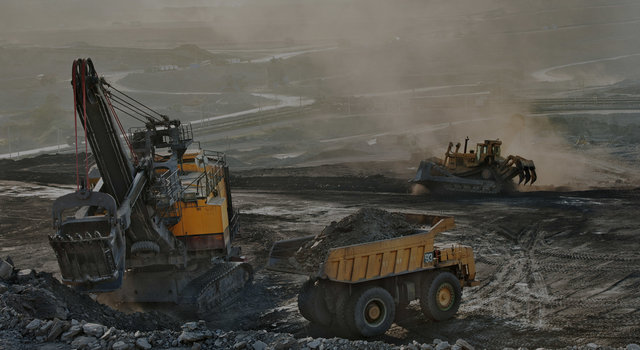MMining has its genesis since BCE times and even into the mid-1900’s was hazardous. It was acceptable for lives to be lost at the cost of development and production and damage to the environment was not counted as nature “self-healed”. More recently mining has been transformed, driven by smart technologies, better construction techniques, safety and strong watchdogs for the environment.

More than half of the country’s coal mines are managed by pro-Russian separatist militia.Credit: DmyTo/Shutterstock.
More than half of the country’s coal mines are managed by pro-Russian separatist militia.
Credit: DmyTo/Shutterstock.
Just as with mining having a long history in the activities of the world, managing risks has its beginnings well before it became formalised as a risk finance mechanism in marine insurance as global trade took to the seas in the 1800’s. However, risk management needs to be properly understood and applied more appropriately in the mining industry.
A successful implementation of risk management has no bounds in the huge value it adds to mining operations, but is it taking place? Can you honestly say that risk management is making a huge difference to your mine? If you took it away, will you find that the performance of the mine goes measurably down?
Imagine if you had a clean slate, that you could start your enterprise risk management at this time.
It’s all in the preparation, by clearly building the right foundation.
The foundation for value adding ERM (enterprise risk management) starts with a comprehensive methodology that is set in documentation, involving top management and building an ERM team with the right competencies to support the implementation phase.
- Policy (or Guiding Principles) : Owned by the Board and sets the vision for ERM.
- Charter : Sets the terms of reference of what is to be governed by the Risk Committee.
- ERM Framework : Owned by Risk Committee, gives a high-level description of ERM across Divisions, Departments, Operations & Projects
- ERM Procedures : Owned by ERM Function, it provides a technical and scientific basis for implementing Risk Programs in a relevant, practical way. This includes establishing standards and codes, governance, risk measurements and processes, risk categorisation, training and education, communication and consultation and risk management systems.
- ERM Programs : A Risk Program, e.g. Project Risks, Safety Management are part of the total ERM pie, where a particular methodology is defined. Methodologies of different Risk Programs are aligned to produce an integrated solution.
- ERM Standards : Provides technical papers and problem solving in topics that are used in ERM Programs as needed.
- Risk Management Implementation Plan : the sequence in which risk programs and strategies will be rolled out. This includes a Maturity Roadmap over some years.

AusProof is celebrating 25 years of business in Australia in 2019.
At this time Mining houses would mostly have risk management established in some form or other. The question is whether the risk management is adequate and so becomes a matter of optimisation.
In the same vein one can ask:
When was risk management last reviewed? Longer than 2 years suggests it is overdue.
Was the review done in-house? If yes, it suggests the changes may be minimal.
Is risk management weighted to safety? If yes, it suggests you lack ERM.
Was the review outsourced to a consultant? If yes, does the consultant have core expertise in implementation of risk management?
ERM is necessarily managed by technical experts that combine a range of skills into a centralised function that works across the dispersed operations of the mining front. Preparation starts here as the depth of knowledge in the ERM Team determines how good risk management is carried into the operations.
The work to prepare the roles and responsibilities of the ERM Team from the Head of Risk, Risk Managers, Risk officers and Risk Coordinators should be done by an expert with proven experience in how to implement ERM successfully.
If the mining house already has ERM documentation in place, this should be reviewed, preferably with input from an independent expert that has proven experience.
It is essential to have high standards of ERM documentation that describes with succinct clarity the way you formulate risk practices, than starting with mediocre documentation.
Two documents to start with are the ERM Guiding Principles and ERM Framework.
Developing (or reviewing and enhancing existing) ERM Guiding Principles involves engaging top management, to understand the success factors they want to see in tangible ways. ERM should “talk the language” of top management and by adding value, demonstrate that ERM supports the achievement of corporate objectives in superior ways.
The ERM Framework is a high-level articulation of ERM that is positioned at the Risk Committee level, setting the overarching risk process, analysis and reporting to be taken through operations by the ERM Functions.
Such documentation, capable of successfully driving ERM becomes the foundation for an ERM Roadmap, next to be developed.

AusProof is celebrating 25 years of business in Australia in 2019.

